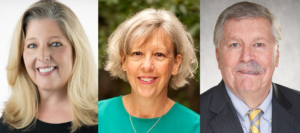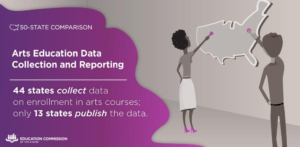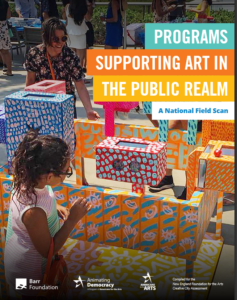May
2019
April 29, 2019
NASAA News and Current Information
May 2 Live Webcast from Capitol Hill: Arts and Rural Prosperity Briefing

A sampling of our briefing speakers: from left, National Endowment for the Arts Acting Chairman Mary Anne Carter; Bozeman, Montana Mayor Cyndy Andrus; and Rural Policy Research Institute founder and President Emeritus Chuck Fluharty
NASAA invites members and colleagues to join us for a Facebook webcast—live from Capitol Hill—of our Arts and Rural Prosperity Briefing, Thursday, May 2, at 9:30 a.m. Eastern. You’ll join policymakers and others in the room to hear members of Congress from both sides of the aisle, along with expert speakers from the public and private sectors, who share research and examples of how the arts contribute to the economic success and quality of life in America’s rural communities. Learn more, and join us via Facebook for the webcast this week!
Register for NASAA 2019 Leadership Institute
 Calling all state arts agency council members, executive directors and deputy directors: Registration is open for the NASAA 2019 Leadership Institute! This year the Rhode Island State Council on the Arts hosts us in Providence, September 18-20. You’ll get up to speed on trends for state arts funders, learn best practices in advocacy and public-agency leadership, and connect with colleagues from around the country. Find out more about the conference agenda—then register and reserve your room at the conference hotel today!
Calling all state arts agency council members, executive directors and deputy directors: Registration is open for the NASAA 2019 Leadership Institute! This year the Rhode Island State Council on the Arts hosts us in Providence, September 18-20. You’ll get up to speed on trends for state arts funders, learn best practices in advocacy and public-agency leadership, and connect with colleagues from around the country. Find out more about the conference agenda—then register and reserve your room at the conference hotel today!
Together We Accomplish More
The work you do in your state is vital to the health and prosperity of our entire country. And NASAA is committed to a future in which every state and jurisdiction achieves its fullest potential in and through the arts. Together, we accomplish amazing things! Please show your commitment to our professional community, your state arts agency and the arts by joining our spring giving campaign. With your help we can move our work forward and keep advancing the arts. Give today—thank you!
States Tracking Arts Education Data
 The Education Commission of the States (ECS) and the National Endowment for the Arts have released 50-State Comparison: Arts Education Data Collection and Reporting. This resource assesses the capacity of all 50 states and Washington, D.C., to identify and report on arts education data already available from their statewide education data systems. The report, which builds on the key questions identified in ECS’s 2018 Using State Data Systems to Report Information on Arts Education, reveals which states collect or publish data on student enrollment in arts courses or teachers assigned to those courses. It aims to inform state and national conversations about how to make more information about K-12 arts education publicly available.
The Education Commission of the States (ECS) and the National Endowment for the Arts have released 50-State Comparison: Arts Education Data Collection and Reporting. This resource assesses the capacity of all 50 states and Washington, D.C., to identify and report on arts education data already available from their statewide education data systems. The report, which builds on the key questions identified in ECS’s 2018 Using State Data Systems to Report Information on Arts Education, reveals which states collect or publish data on student enrollment in arts courses or teachers assigned to those courses. It aims to inform state and national conversations about how to make more information about K-12 arts education publicly available.
National Field Scan of Community Focused Arts Programs
Programs Supporting Art in the Public Realm: A National Field Scan is a new resource from Americans for the Arts (AFTA) and the Barr Foundation that highlights 30 community focused arts programs around the country. The scan, while not comprehensive, provides snapshots of grant programs, public art initiatives, artist residencies, and training and professional development programs that empower artists to be active and creative citizens in their communities. The report also summarizes an analysis of these efforts, organizing its findings into seven key themes. AFTA and the Barr Foundation conducted this field scan to inform the future of the Creative City program of the New England Foundation for the Arts. The three-year pilot phase of that program is summarized in a related report.
In this Issue
From the President and CEO
State to State
Legislative Update
Announcements and Resources
More Notes from NASAA
Research on Demand
SubscribeSubscribe
×
To receive information regarding updates to our newslettter. Please fill out the form below.

